Price:₹30,000.00
Borasu Pass Trek is the Ancient Trade Route in Uttarakhand, India, and offers several highlights and unique experiences for trekkers.
Borasu Pass trek is a pass perched between high mountains in India which divides Uttarakhand and Himachal Pradesh.
It was used as a trade route between Har Ki Dun valley and Kinnaur valley. On the other hand the Tibet border lies few kilometres away from this pass.
Borasu pass trek people should also do because, along with Borasu pass trek, you also do Harkidoon trek, which is also a huge profit and you can enjoy two treks together, that’s why we offer this
The Borasu Pass trek is a popular trekking route located in the Uttarkashi district of Uttarakhand, India. The trek takes you through the beautiful and pristine Himalayan mountains, offering stunning views of the surrounding peaks, glaciers, and valleys.
Here are some details and highlights of the Borasu Pass trek:
Duration: The Borasu Pass trek is a 08 day trek, covering a distance of around 60-70 km.
Difficulty level: The trek is rated as moderate to difficult, and is recommended for experienced trekkers who are in good physical condition.
Route: The trek starts from the village of Sankri, which is around 200 km from Dehradun. From Sankri, you will trek through beautiful forests, meadows, and streams to reach the base camp at Chilurgad. From there, you will cross the Borasu Pass at an altitude of 5,450 meters, and descend to the Rupin River valley, before reaching the village of Sangla in Himachal Pradesh.
Highlights: Borasu pass Trek
- Spectacular views of the Himalayan mountain ranges, including Swargarohini, Kalanag, and Banderpunch peaks.
- Trekking through beautiful meadows and forests, filled with rhododendrons and other wildflowers.
- Crossing the Borasu Pass, which is one of the highest passes in the region, and offers breathtaking views of the surrounding peaks and glaciers.
- Meeting and interacting with the local villagers, who are known for their warmth and hospitality.
- Camping under the stars, and experiencing the peacefulness and serenity of the Himalayan wilderness.
Overall, the Borasu Pass trek is a challenging and rewarding trek that offers a unique opportunity to explore the natural beauty and cultural richness of the Himalayas
During the trek, pass through grasslands, steep ridges, snow slopes, and a glacier. And the trail remains covered in snow during winter.
When there were no road resources, our ancestors going from Gangar, Pawani, Osla Village, Har ki dun, Ratado, or Lamjunga reached Summit or Chitkul. village In 2-3 days they were cover this distance.
Also, Borasu Pass is one of the famous Trek. People come from abroad for one of the most ancient Trek.
In Olden times people used to graze Sheep and goats on this Trek route. In 1968, this Trek was also made as a Route Trek.
The Credit goes for this route Trek to Local residents.
Har Ki Dun and borasu pass Trek is an Enthralling valley in the Garhwal Himalayas of Uttarkashi district in Uttarakhand India, this trek comes under Govind Wildlife Sanctuary National Park.
No doubt, the Himalayas have enchanting beauty, a bracing climate and a desirable soothing green meadow.
So, what else can be better than spending some days here in the serenity after trekking Kinnaur valley chitkul.
Certainly, it is for the people who seek adventure! But, Borasu Pass trek is an exhilarating long trek suggested for experienced trekkers,
And the efforts are totally worth because Borasu Pass offers views of Bandarpoonch, Swargarohini peaks, Kala Nag, Black Peak and Har Ki Dun.
Connects Har Ki Dun to Baspa Valley in Borasu pass
The Har Ki Dun trail further leads to Borasu Pass in Himachal and connects Har ki Dun Valley to Baspa Valley.
On the way come across a variety of wealthy flora and fauna and spot beautiful Himalayan birds and rare species of animals.
Like, mountain goat, ibex, barasinga, black bear, etc most
Best Time to do Borasu pass?
The best time to visit Sar Pass Trek is during the summer months of May to June and September to October. These periods offer favorable weather conditions and clear skies, making it easier to navigate the trekking route and enjoy the stunning views.
During May to June, the weather is pleasant, and the snow starts melting, revealing beautiful meadows and vibrant landscapes. This period is considered the pre-monsoon season, and the temperatures are moderate, ranging from 15 to 20 degrees Celsius during the day and dropping to around 5 degrees Celsius at night.
September to October is also an excellent time for the Sar Pass Trek. It is the post-monsoon season, and the weather remains relatively dry and stable. The temperature during this time ranges from 10 to 15 degrees Celsius during the day and can drop to freezing temperatures at night.
It’s important to note that weather conditions can vary, so it’s advisable to check the local weather forecast before planning your trek. Additionally, be prepared for sudden weather changes and carry appropriate clothing and gear to ensure a safe and enjoyable experience.
Why choose Borasu pass Trek?
Before heading towards the itinerary, it is really essential to perceive the reason behind choosing Bali Pass trek.
See firstly, the trekking distance is a total of by taxi 221 Km and on foot 64 km which is to be covered in 8 days. Dehradun to via Har Ki Dun To Chitkul market
Borasu Pass trek is a high altitude mountain trek Altitudes is 5450 Meters
The Starting trail is moderate as compared to other treks this is a difficult trek. So this trek is not for beginners
Need proper gear & clothing for sub-zero temperatures?
In addition, You got to see so many heavenly bodies at one place like the panoramic view of the Himalayan ranges, meadows, one of the beautiful Har Ki Dun treks on the way to beautiful manida lake, pine forests, different variety of flora and fauna surpassing through bona fide Garhwali heritage and culture.
I think Do spare time in Interaction with our local’s team, and you will get to know about some of the ancient tales of Indian mythology and our local cultures, these is good ideas for trekkers
And, in summer, the Borasu pass trek turns totally different and amusing because of meadows, wildflowers, and woods blooming in different colures.
Beautiful landscapes so carry proper photo gear & Extra battery backup.
The backpack should not exceed 10 to 12 kg only
Borasu Pass Trek in May or June?
Borasu Pass Trek Month in May and June gives a slightly different experience to Trekkers because in May you start getting snow after Har Ki Dun.
The Borasu Pass trek starts from Sankri market and its endpoint is Chitkul Village.
Borasu pass trek starts from Sankri via Har Ki Dun in Uttarakhand which comes in the Supin range and end this trek ends at Chitkul village which comes in Himachal Pradesh
In May and June, you get a combination of both greenery and snow, which makes the trek very spectacular. The weather in May and June is quite good and trek-friendly, which makes trekking a lot of fun.
During the day the temperature of Borasu Pass is around ( 5°C to 10 °C and during the night the temperature comes down to -1 °C to -5 °C which is not bad.
Views and treks in Borasu Pass provide a lot of peace to the mind during the day, while you wake up from one wake to another, Borasu Pass can always be one of the closest treks in your heart.
You will never consider yourself bored in Borasu Pass Trek, this trek can give you nothing but joy, You will get to see the culture and beauty of two beautiful states in this trek which will always keep you connected to the mountain.
Borasu Pass trek in September or October
Borasu Pass is a little different in the months of September and October, this is because you will not find snow here in these months.
But the beauty of the trek will not be lacking, the trek and nature adorn themselves with time and in different colors. The month of September and October are very good days to trek, at this time total greenery and at the end of October sometimes you can get to see live snowfall.
During the day the temperature of Borasu Pass is around Day time 6°C to 13 °C and during the night the temperature comes down to 3 °C to – 4 °C which is very confirmable,
At this time the weather here will be very good for you, At this time it is even safe to trek here and there is no rain.
About Base Camp Sankri
Sankri is the base camp for the Borasu pass trek but also for 25 + Himalayan treks.
Thus, it always remains busy with the hustle and bustle of trekkers. This small and pretty market is truly picturesque because of its idyllic setting and serene aura.
There are beautiful wooden houses made of Deodar wood. And temple And, also some hotels and restaurants serving delicious local food. Their specialty is “Red Rice” Rajma, Mandwa, jangora, gopka, Bethu, kali, marsa many foods.
So, get to know the villagers and have a glimpse of their lifestyle. It is the best place to explore the Himalayan culture and tradition.
You will also have some excellent views of the lofty Swargarohini Peaks and Bandarpunch. And yes, do not miss their glorifying sunrise and sunset views.
Moreover, the nearest village to Sankri is “Saur”. The temple of Someshwar Devta there is highly worshipped by the villagers.
Therefore, the base camp will leave you admiring its exquisite beauty.
How Difficult Is Borasu Pass?
The Borasu Pass Trek is considered a challenging trek that requires a good level of physical fitness and prior trekking experience. It is not recommended for beginners or individuals with limited hiking experience.
The trek involves navigating through steep ascents, descents, rocky terrain, moraines, and high-altitude passes. The trail can be demanding and requires endurance, stamina, and agility. The trek involves crossing glaciers and traversing challenging sections, which may involve the use of ropes and technical skills.
The altitude is also a factor to consider. The Borasu Pass stands at an elevation of approximately 5,450 meters (17,880 feet), which poses the risk of altitude sickness. Proper acclimatization and gradual ascent are crucial to ensure your safety and well-being.
Moreover, the trek is often conducted in remote and isolated areas, with limited facilities and infrastructure. It is essential to be well-prepared with appropriate gear, supplies, and a knowledgeable guide or team.
Overall, the Borasu Pass Trek is considered a difficult and strenuous trek, suitable for experienced trekkers who are physically fit, have prior high-altitude trekking experience, and are well-prepared for the challenges it presents.
Borasu Pass Trek safe for me?
Borasu Pass Trek is a safe trek if you are going with a good trekking team which you must know before booking yourself, It is important for you to know whether the bow trekking organization with which we are going is right or not,
And if possible, trek with a local trekking organization, you can do the same help all the time. then your trek can be very good and memorable
The minimum age required to trek Rupin Pass is 20 years and the maximum 55 years. The rest depends on your fitness.
The altitude we are going to cover in Borasu Pass Trek
Sankri – 1920 Meters
Cheludgad camp – 2600 Meters
Har Ki Dun Camp – 3645 Meters
Rata Dho camp – 4105 meters
Upper Lamjunga Camp – 4899 Meters
Borasu Pass Summit – 5,450 Meters or 17,880 feet
Rani kanda – 3420 Meters
Key Points of Borasu Pass Trek
Duration: – 7 Nights 8 Days from Dehradun to Chitkul Village
Base camp: – Sankri
Summer Temperature:- Day 5°C to 12°C) Night – 2° C to 5° C
Borasu pass Altitude: – 5450 Meters
Best Time: – May, June, September, October
Trek Level: – Difficult
Trek distance: – On foot 67 Km – By taxi 221 km
Short Itinerary of Borasu Pass Trek
Day 1- Pick up you from Dehradun railway station – Drive to Sankri Market – 210 Km (8/9 Hours (1920 Meters) overnight stay at the Grand Shiva Hotel at Sankri
Day 2 – Trek from Sankri to Taluka by taxi – 11 km same day trek to Cheludgad camp (12 km) (4/5 Hours) (2600 Meters ) overnight stay at Camp
Day 3 – Trek from Cheludgad camp to Bhasla camp Har Ki Dun (13 km) (6/7 Hours) (3645 Meters )overnight stay at Camp
Day 4 – Trek from Har Ki Dun to Ratta Dho camp via Manida Lake (08 km) (4/5 Hours) (4105 Meters) overnight stay at Camp
Day 5- Trek from Ratta Dho to Upper Lamjunga camp (09 km) (5/6 Hours) (4899 Meters) overnight stay at Camp
Day 6- Rest Day for Acclimatization for the next day’s hike
Day 7- Trek from Upper Lamjunga to Borasu Pass summit (5450 Meters) down to Bonga camp (13 km) (7/8 Hours) (4470 Meters ) overnight stay at Camp
Day 8- Bonga camp to via rani kanda to Chitkul market (12 Km) (5/6 Hours) (3450 Meters)
Your Travel Plan for the Borasu pass trek in Uttarakhand
You can book trains, air flights, and bus tickets for your journey only according to the information given by us.
The Borasu pass trek will be of 7 days and 01 day of your journey total of 08 Days from Dehradun to Chitkul market Himachal
First of all, all the trekkers will have to book their flight and train bus according to our timetable as our pick-up is from 6 am to 7 am, and you will have to reach Dehradun in the morning.
A taxi from Himalayan hikers will link you to the Dehradun railway station.
Himalayan Hikers organize transport to Sankri base camp from Dehradun railway station. Our vehicles leave at 6:00 am to 7:00 am sharp from Dehradun. The taxi costs include your package for a Tempo Traveler. Sharing
At Dehradun railway station you will get our staff that will arrange transport for you. The contacts no Transport coordinator or our office team will give you a week ago to your departure
Please you guys book your transport facility according to your own timetable, after Himalayan hackers take all the responsibility of Chitkul from Dehradun, you will not face any problems.
How to reach Dehradun for Borasu Pass Trek?
To reach Dehradun for the Borasu Pass Trek, you can follow these general guidelines:
By Air: The nearest airport to Dehradun is the Jolly Grant Airport, located approximately 25 kilometers from the city center. You can take a flight to Jolly Grant Airport from major cities in India like Delhi, Mumbai, and Kolkata. From the airport, you can hire a taxi or take a pre-arranged transfer to reach Dehradun.
By Train: Dehradun is well-connected by train to various cities in India. There are regular trains from Delhi, Mumbai, Kolkata, and other major cities to Dehradun Railway Station. Once you arrive at Dehradun Railway Station, you can hire a taxi or take a local bus to reach your accommodation or the trek starting point.
By Road: Dehradun has good road connectivity with nearby cities and states. You can opt to travel by road via private car, taxi, or bus. Regular bus services operate from major cities like Delhi, Chandigarh, and Shimla to Dehradun. The journey duration will depend on your starting location.
Once you reach Dehradun, you can make further travel arrangements to the specific starting point of the Borasu Pass Trek. It is recommended to consult with authorized trekking agencies or local tour operators for detailed guidance on the trekking route, transportation options, and any permits or permissions required for the Borasu Pass Trek. They can provide you with the most up-to-date information and assist you in making suitable arrangements for your trek.
What to Pack for Borasu pass trek clothes?
Borasu Pass Trek, it’s important to be well-prepared with appropriate clothing to ensure comfort, safety, and protection from the elements. Here are some essential clothing items to consider:
- Base Layers: Pack moisture-wicking and quick-drying base layers, including thermal tops and bottoms, to provide insulation and regulate body temperature.
- Insulating Layers: Carry warm and insulating layers such as fleece jackets, down jackets, or synthetic insulated jackets to keep you warm during cold temperatures.
- Outer Shell: Bring a waterproof and windproof jacket to protect you from rain, snow, and strong winds. Look for a jacket with good breathability to prevent overheating.
- Trekking Pants: Pack comfortable and durable trekking pants that are breathable and allow freedom of movement. Convertible pants (with zip-off legs) can be convenient to adapt to changing weather conditions.
- Trekking Shirts/Tops: Carry moisture-wicking and quick-drying shirts or t-shirts for the trek. Long-sleeved shirts offer protection from the sun and insects.
- Warm Layers: Include warm sweaters or fleece layers for extra warmth during chilly evenings or high-altitude sections.
- Headwear: Pack a warm beanie or hat to protect your head from cold temperatures. Also, bring a sun hat or cap to shield yourself from the sun.
- Gloves and Mittens: Carry insulated gloves or mittens to keep your hands warm during cold weather. Consider having a waterproof outer layer to protect against snow or rain.
- Socks: Bring moisture-wicking and cushioned hiking socks to prevent blisters and provide comfort during long treks. Pack extra pairs of socks for changing into dry ones.
- Footwear: Invest in sturdy and comfortable trekking shoes that provide ankle support and have good traction. Ensure they are broken in before the trek to avoid discomfort or blisters.
- Gaiters: Gaiters are recommended to protect your legs and boots from snow, mud, or debris.
- Rain Gear: Pack a lightweight, packable rain jacket and rain pants to stay dry during rainfall.
- UV Protection: Carry sunglasses with UV protection to shield your eyes from harsh sunlight. Don’t forget to bring sunscreen with a high SPF rating for skin protection.
- Trekking Accessories: Consider packing a lightweight and quick-drying towel, a headlamp or flashlight, trekking poles for stability, and a small backpack rain cover.
Remember to pack according to the season and weather conditions during your trek. Layering your clothing allows you to adjust to changing temperatures and conditions. Additionally, pack your belongings in a waterproof backpack or dry bags to protect them from rain or snow.
How to get fit for Borasu Pass Trek in Uttarakhand?
Preparing yourself physically for the Borasu Pass Trek is essential to ensure an enjoyable and safe experience. Here are some tips to help you get fit for the trek:
- Cardiovascular Fitness: Focus on improving your cardiovascular endurance as trekking involves long hours of walking and uphill climbs. Engage in activities like jogging, cycling, swimming, or brisk walking regularly to increase your stamina and cardiovascular fitness.
- Strength Training: Strengthen your leg muscles, core, and upper body to handle the demands of the trek. Incorporate exercises like squats, lunges, step-ups, planks, push-ups, and shoulder presses into your workout routine.
- Hiking and Trekking Practice: If possible, include regular hikes or treks in your training regimen to simulate the conditions and challenges you’ll encounter during the Borasu Pass Trek. Gradually increase the duration and difficulty of your hikes to build endurance.
- Stair Climbing: Climbing stairs is an excellent exercise to simulate uphill sections of the trek. Incorporate stair climbing into your workout routine to build strength and endurance in your legs.
- Flexibility and Stretching: Maintain flexibility in your muscles by incorporating regular stretching exercises into your fitness routine. Focus on stretching your calves, hamstrings, quadriceps, hip flexors, and shoulders.
- Core Strength: Strengthen your core muscles to improve balance and stability during the trek. Include exercises such as planks, Russian twists, and bicycle crunches to target your core.
- Weight Training: Incorporate strength training exercises with weights to build overall strength and muscular endurance. Include exercises targeting the major muscle groups in your body.
- Gradual Progression: Start your training program well in advance of the trek and gradually increase the intensity and duration of your workouts. This will help prevent injuries and allow your body to adapt to the physical demands of trekking.
- Stay Hydrated: Maintain good hydration by drinking an adequate amount of water throughout the day, both during your training and the trek itself. Proper hydration is crucial for optimal physical performance.
- Consult a Professional: If you have any pre-existing health conditions or concerns, it’s advisable to consult a healthcare professional or a certified fitness trainer before starting any fitness regimen.
Remember, it’s important to listen to your body and not push yourself beyond your limits. Give yourself enough time to rest and recover between training sessions. Additionally, maintain a balanced and nutritious diet to fuel your body for training and the trek.


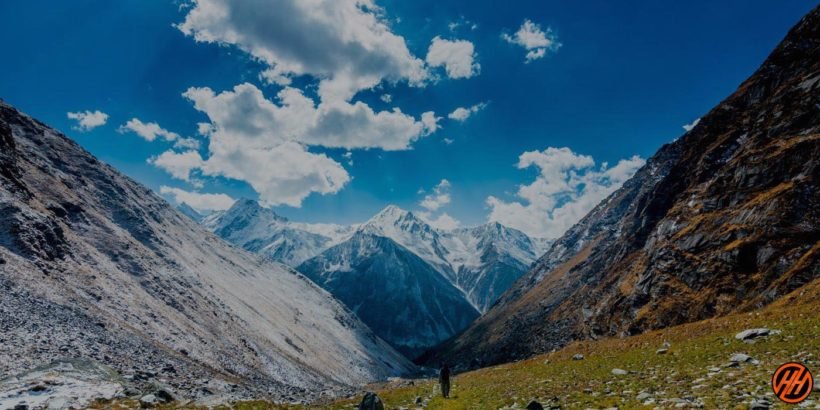


















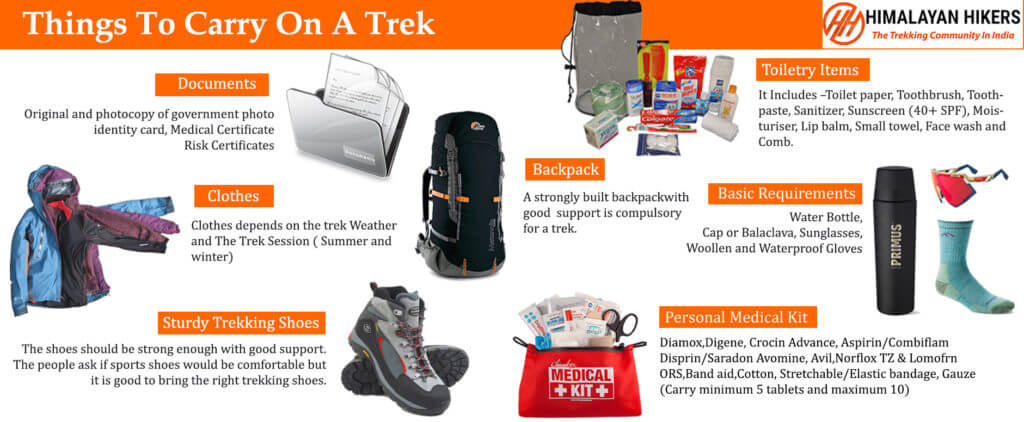


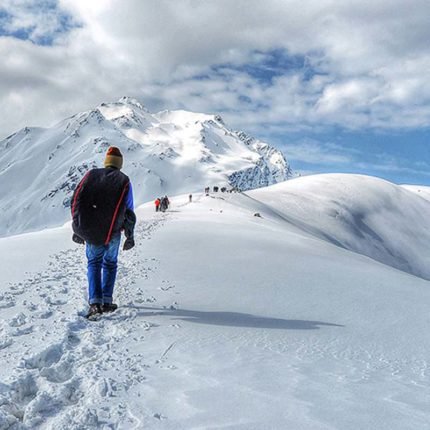
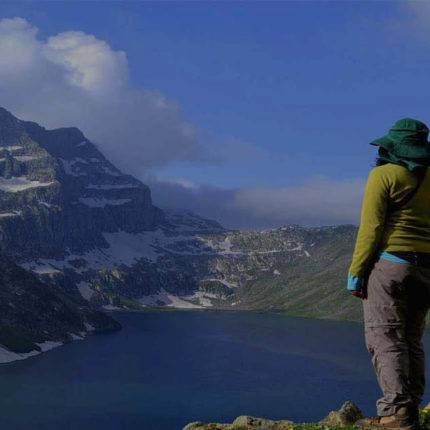
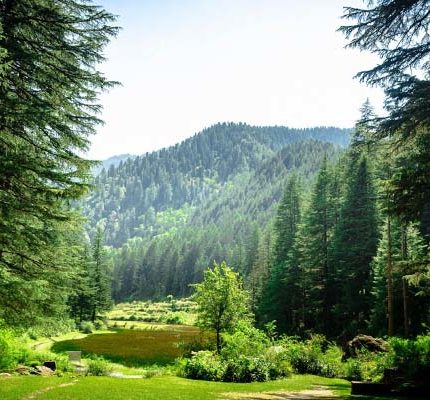
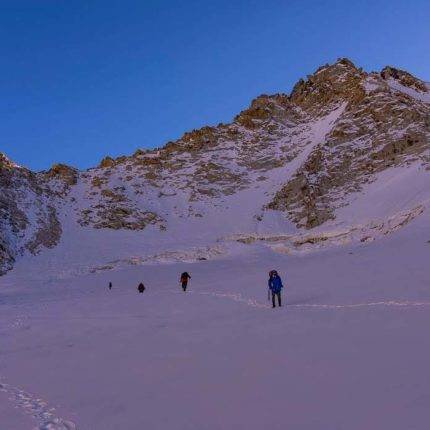
Reviews
There are no reviews yet.